This blog post was written by NCTE member Clare Landrigan as part of Build Your Stack,® a new initiative focused exclusively on helping teachers build their book knowledge and their classroom libraries. Build Your Stack® provides a forum for contributors to share books from their classroom experience; inclusion in a blog post does not imply endorsement or promotion of specific books by NCTE.
Poetry needs to be more than the month of April or a unit of study. Poetry should be available to readers and writers all year long. Using different types of poetry creates an opportunity to integrate poetry into all of our units of study.
What are the benefits? Poetry offers students interesting and varied ways to learn new information, express a story, and argue an opinion. Experiencing a wide range of poems and poetic formats helps readers interpret from multiple perspectives and invites writers to experiment with using poetry in new ways.
Here’s a stack of poetry texts that explore different genres. They are filled with layers of meaning and interesting organizational structures. Readers will learn the importance of looking closely to notice details, experience the sheer beauty of the natural world, feel the mood of a narrative, and learn the power of word choice.
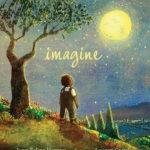 Imagine
Imagine
by Juan Felipe Herrera, illustrated by Lauren Castillo
This beautiful memoir in verse celebrates the life of former US Poet Laureate Juan Felipe Herrera. The reader journeys throughout Herrera’s life and gets a glimpse into how his passion for words developed. It is inspirational and invites readers to imagine what they have the power to accomplish in life. Powerful craft moves will invite young writers to study this text throughout the year.
 The Undefeated
The Undefeated
by Kwame Alexander, illustrated by Kadir Nelson
This text took my breath away. It is a powerful, vital illustrated poem that inspires inquiry, discussion, close reading, and writing. It is one to read many times, as the illustrations and words provide surprising and thought-provoking connections. Students will be launched into research projects to learn more information and inspired to try this text structure in their own writing. Check out the author’s note and biographical timeline at the end as well.
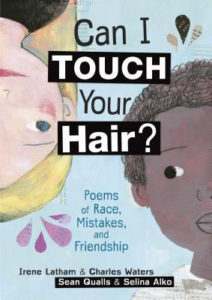 Can I Touch Your Hair? Poems of Race, Mistakes, and Friendship
Can I Touch Your Hair? Poems of Race, Mistakes, and Friendship
by Irene Latham and Charles Waters, illustrated by Sean Qualls and Selina Alko
Can I Touch Your Hair is a collaboration between Irene Latham and Charles Waters. These two artists put their talents and experiences together to create poetry that brings out the everyday racial issues that surround children in school. Irene and Charles are the two children in the book who become writing partners in class. As they write poems back and forth about everyday topics, they learn about each other, about race, and ultimately about friendship. The poems help readers reflect on their own biases and think about the perspectives of others, and encourages reflective conversations.
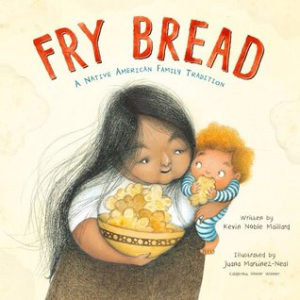 Fry Bread: A Native American Family Story
Fry Bread: A Native American Family Story
by Kevin Noble Maillard and Juana Martinez-Neal
This is a beautiful story in verse. It celebrates identity—honoring both the past and the present. Fry bread is presented as more than a food; it is a thread woven throughout Native American culture. This book is warm with love of family and tradition. I love the message that empathy and compassion is not a one-way street—everyone is strengthened when we act with kindness and compassion. See also the resources and background information provided.
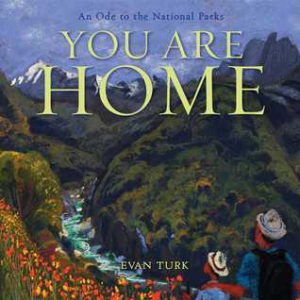 You Are Home—An Ode to the National Parks
You Are Home—An Ode to the National Parks
by Evan Turk
This gorgeous book, written and illustrated by Evan Turk, contains many messages and layers of meaning. Readers will be compelled to research each national park to learn more about the illustration and words chosen. The author’s note and map at the end of the book are not to be missed.
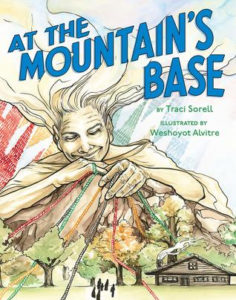 At the Mountain’s Base
At the Mountain’s Base
by Traci Sorell
This beautiful poem tells the story of a Cherokee family. While the story seems to be about the ordinary day in the life, we learn the family awaits a loved one. It is a story of family, tradition and strength. Although it’s fictional, the author’s note provides factual context and many invitations for research.
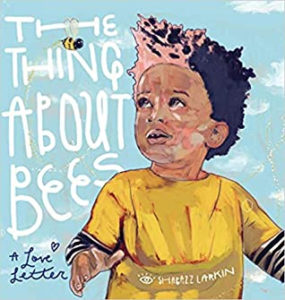
The Thing About Bees
by Shabazz Larkin
This is a beautiful book in verse. It is a love letter, a how-to, an “all-about . . .,” and a poem rolled into one text. This is a mentor text you can keep by your side all year long to study craft, genre, and structure. Don’t miss the author’s note in the back where he shares his inspiration for this book—great to share when you are launching writing workshop at the beginning of the year.
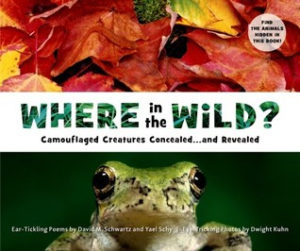 Where in the Wild? Camouflaged Creatures Concealed . . . and Revealed
Where in the Wild? Camouflaged Creatures Concealed . . . and Revealed
by David M. Schwartz, Yael Schy, and Dwight Kuhn
Where in the Wild? has an interesting text structure that young writers love to study. The book begins with a poem about an animal and a photograph showing the animal camouflaged in nature. A flap invites the reader to take a peek and see where the animal is hiding and learn some interesting related facts. These authors use poetry, expository writing, and photography to teach about the concept of camouflage.

Mirror Mirror
by Marilyn Singer and Josee Masse
These poems are wonderful to share with students who love traditional tales and poetry. They are perfect to include in a unit on traditional tales, as they invite you to enjoy old favorites from a different perspective. The reverse structure is useful to help students to think about author’s craft and the deeper meaning created through the structure. Students love comparing and contrasting the poems with the original tales and even experimenting with this form of poetry themselves.
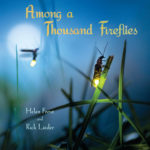 Among a Thousand Fireflies
Among a Thousand Fireflies
by Helen Frost and Rick Lieder
This is a great title to add to your series section, along with Step Gently Out and Sweep Up the Sun. I don’t think our young readers think about poetry when they are thinking about choosing a series. The visual and poetic images are gorgeous. Students will immediately notice the word choice and comparative language used. An author’s note provides more information about fireflies and why they are important in our world.

Clare Landrigan is a staff developer who is still a teacher at heart. She leads a private staff development business and spends her days partnering with school systems to implement best practices in the field of literacy. She is the co-author of It’s All About the Books and blogs about books and the art of teaching on her website www.clarelandrigan.com.

